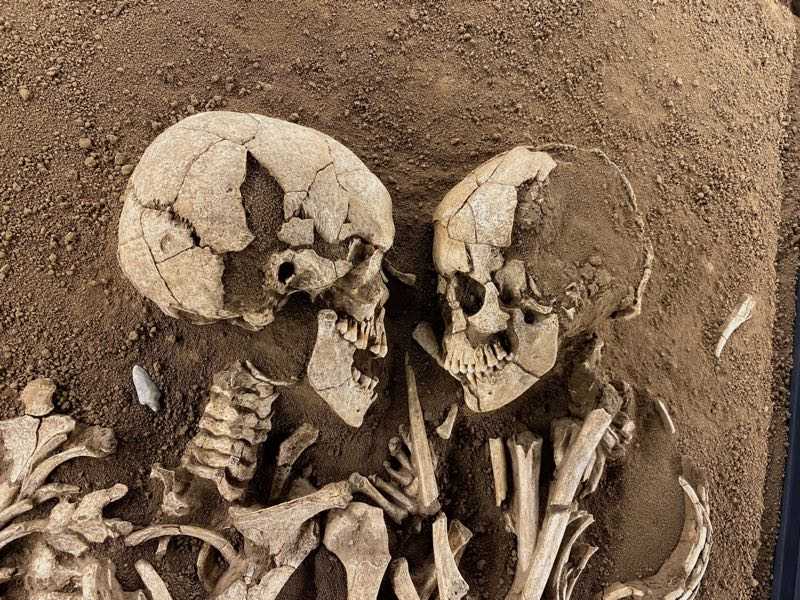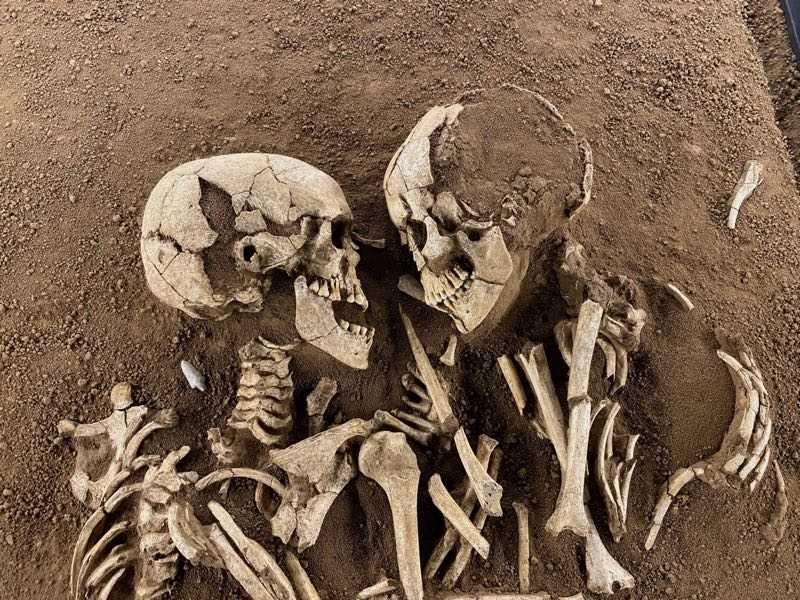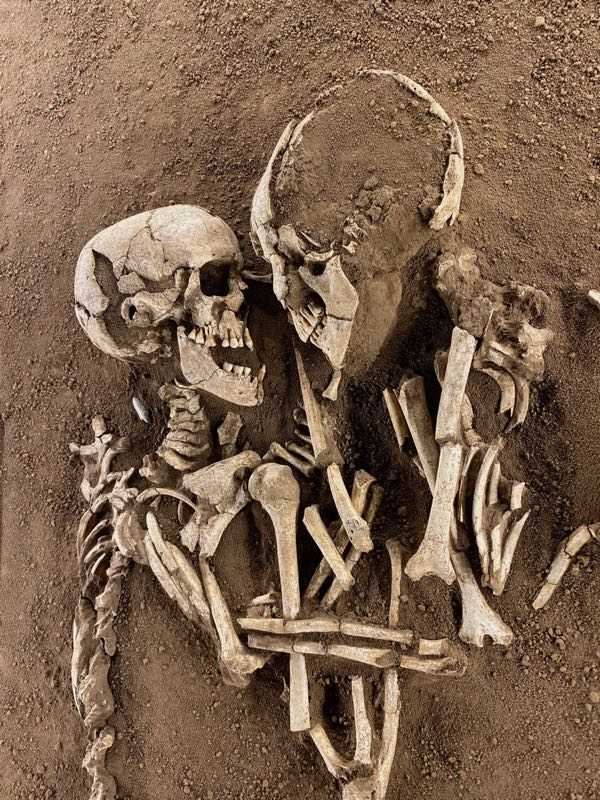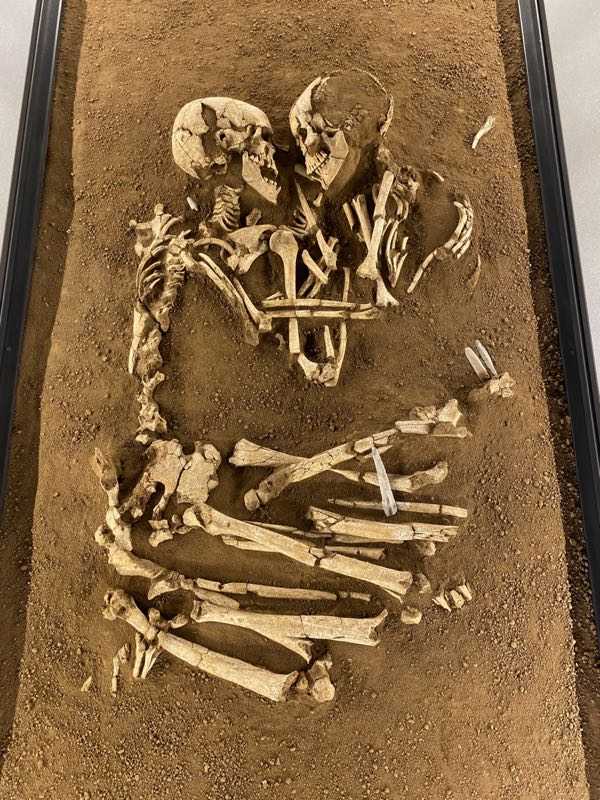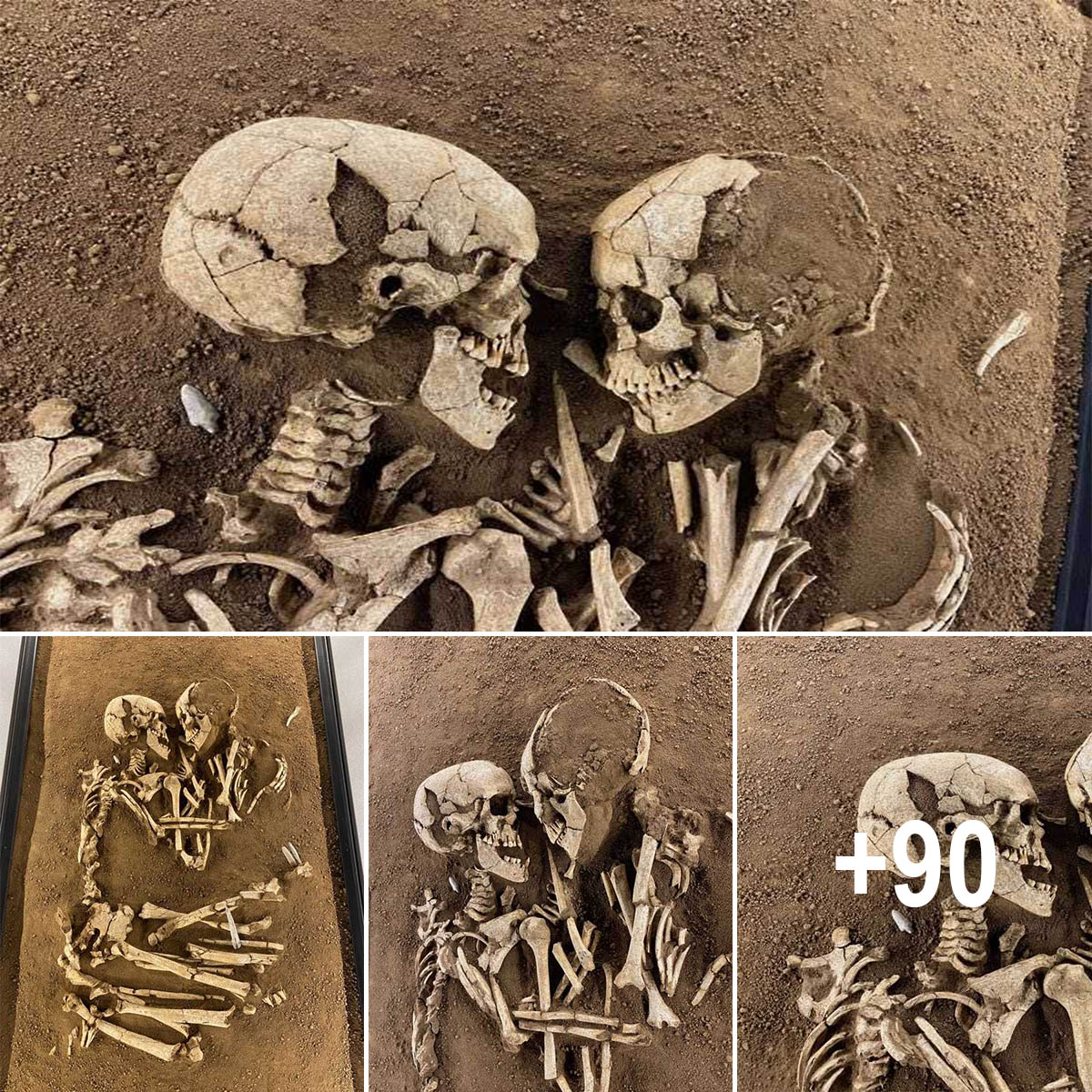The Lovers of Valdaro: an Embrace that has lasted for 6,000 years
The Lovers of Valdaro were discovered in 2007 and constitute a pair of skeletons, which belonged to a man and a woman, which made millions of people all over the world dream. Today their burial is visible in a case in the Archaeological Museum of Mantua , visited every year by thousands of people who fantasize about the stories that led these two of our ancestors to their deaths, united in an indivisible embrace.
Photograph by Matteo Rubboli:
The two individuals are buried in a crouched position, a common practice in Italy from the Neolithic to the Bronze Age. The analyzes have allowed us to discover a lot about the two buried people. The female was between 16 and 20 years of age when she died while the male was slightly older, between 18 and 22 years old. Both brought with them the consequences of malnutrition suffered while growing up. The two were just under five feet tall and their teeth were heavily worn, also bearing traces of hypoplasia (reduced development).
Photograph by Matteo Rubboli:
Adjacent to the skeletons were also found some flint tools, including two blades and an arrowhead.
Photograph by Matteo Rubboli:
The two were buried at the same time, and the simultaneity of the burial is the cause of the proximity of their limbs. The soft tissues, dissolving, made her legs and arms intertwine so that they seemed to be entwined in a romantic embrace. Even if the “embrace” is therefore involuntary, that of the Valdaro lovers is the only bisoma burial (with two bodies) found in Northern Italy.
Photograph by Matteo Rubboli:
The two “lovers” were discovered in February 2007, close to Valentine’s Day, and for 7 long years they remained confined inside a wooden box, displayed only on special occasions. Since 2014 they have found their definitive location at the Archaeological Museum of Mantua, where they are shown to the public in a shatterproof glass case.
Near them there are other burials of very ancient inhabitants of this area, a place which was then the scene of the Etruscan, Celtic and Roman civilizations, but which owes its name to the legend of the Greek prophetess Manto. Legend has it that after the death of her father Tiresias during the siege of Thebes, the woman began to wander around, stopping only in the area of present-day Mantua, where she began to cry, giving rise to the lakes that surround the city. Today the times of the Neolithic, the Greek prophetesses and the Romans are far away, but the site has not lost its magical aura which is reflected along the course of the river Mincio.
Hits: 0
